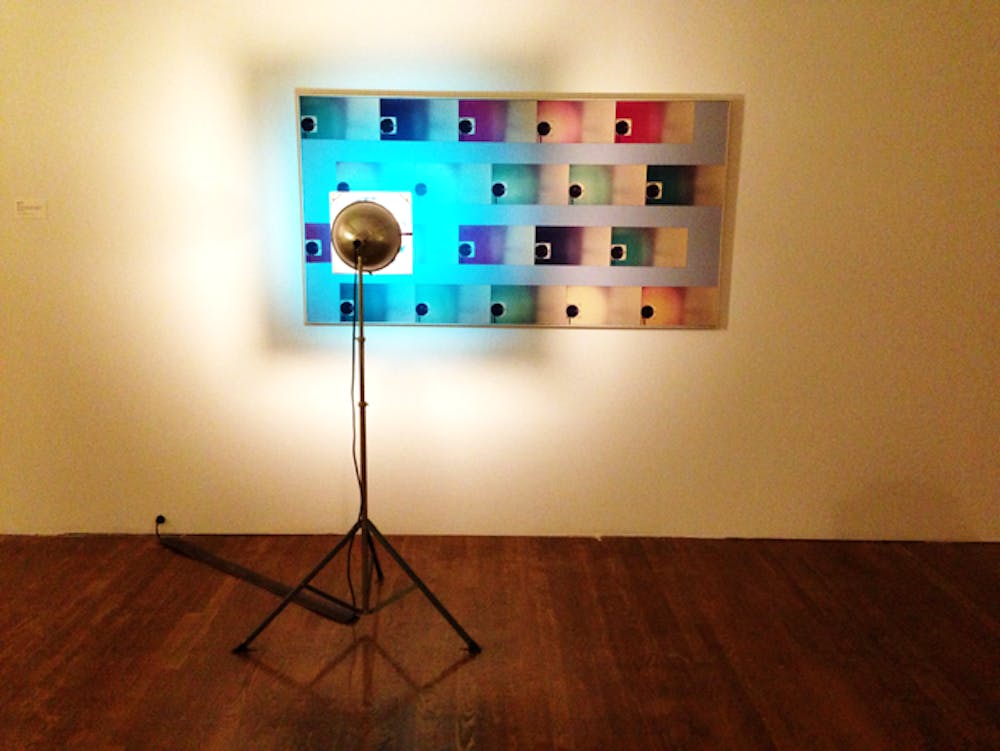On Wednesday I took advantage of the Pay–What–You–Wish evening at the Philadelphia Museum of Art (a.k.a. $1 or $2 entrance instead of the usual $14 student price) to see the Michael Snow “Photo–Centric” exhibition. Never heard of Michael Snow? Don’t worry, neither had I. In fact, when the show curator Adelina Vlas came to the PMA in 2007 from the National Gallery of Canada, the question of Snow’s anonymity in the U.S. was a popular one. “I didn’t realize that was the case, so Michael and I sort of walked together into the Philadelphia Museum of Art,” she recollected. Michael Snow, 84, is a Toronto–based filmmaker, musician, painter, sculptor and photographer (a man of many talents). While the show was dedicated solely to his photography, his other expertise showed through in the images. The works engage the viewer in quasi–narrative sequences. One becomes an active participant in the composed worlds within the photographs. “Atlantic” (1967) features a series of black–and–white photos of waves behind a metal grid–like construction. The metal boxes reflect light in such a way that it appears the waves are coming out of the photographs. The composition compels you into a peaceful trance as you walk slowly back and forth, watching the waves move. Meanwhile, for “Crouch, Leap, Land” (1970) the audience must squat underneath the hanging artwork to look up at images of a jumping nude. Staging and composition are recurring themes in Snow’s work, which is unsurprising given his filmmaking background. In an essay reprinted in the exhibition catalogue, Snow writes, “I have added the camera and its products to the traditional tools of the painter/sculptor. My photographic works are an art of the studio, not of daily life.” In “Powers of Two” (2003), a mural–sized photographic transparency hanging from the ceiling, a woman stares defiantly at the audience from beneath her lover. Viewer instantly becomes voyeur. The audience’s gaze is locked with the woman's, as though they too are in the room. The piece draws into question the distinctions between public and private, as well as the meaning of intimacy. The experimental processes that Snow has worked with are truly inspiring and exciting. The exhibition makes you wonder why you haven’t heard the name Michael Snow before. Remember, you heard it here first.
Review: Michael Snow's "Photo-Centric," Philadelphia Museum of Art

34th Street is an independent, student-run arts & culture magazine. Please consider making a donation to support the coverage that shapes the University. Your generosity ensures a future of strong journalism at Penn.
Donate





